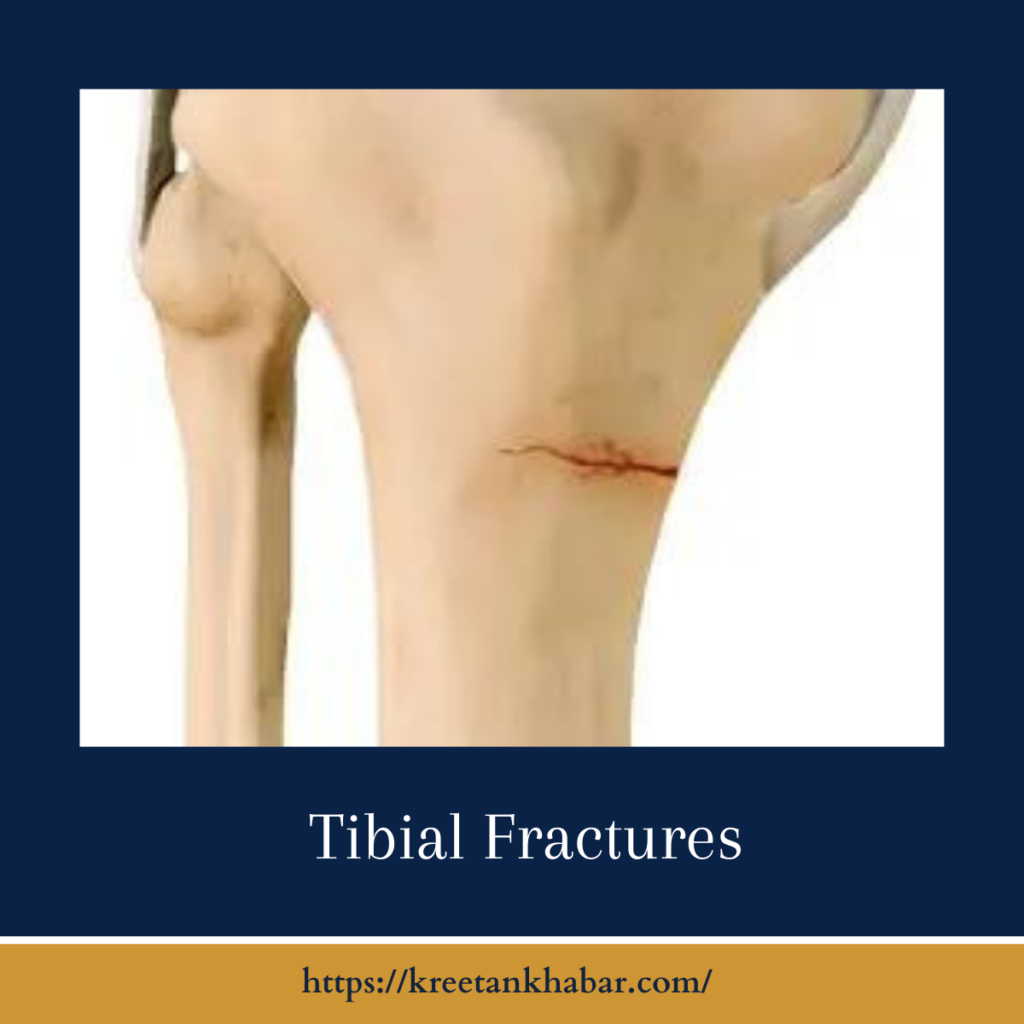Tibial Fractures: Causes, Types, and Treatment
Introduction:
The tibia, commonly known as the shinbone, is a crucial weight-bearing bone in the lower leg. Tibial fractures, though relatively common, present a spectrum of challenges due to the essential role the tibia plays in supporting body weight and facilitating movement. This article explores the diverse causes, types, and treatment options associated with tibial fractures.

Understanding Tibial Fractures:
Tibial fractures can result from various forces and traumatic incidents, ranging from sports injuries and vehicular accidents to falls from heights. The tibia is particularly susceptible to fractures due to its position and role in maintaining the structural integrity of the lower extremities.
Causes of Tibial Fractures:
- Trauma and Accidents: High-impact traumas, such as car accidents or falls, can lead to tibial fractures. The force exerted on the leg during these incidents can cause the tibia to buckle or break.
- Sports Injuries: Athletes, especially those participating in high-impact sports like soccer or basketball, may be prone to tibial fractures. Direct blows, sudden twists, or collisions can result in fractures.
- Osteoporosis: Weakened bones due to conditions like osteoporosis increase the risk of fractures, including those affecting the tibia.
- Stress Fractures: Repetitive stress on the tibia, often seen in long-distance runners or military personnel, can lead to stress fractures over time.
Types of Tibial Fractures:
- Closed Fractures: The bone breaks, but the skin remains intact. Closed fractures may still require realignment and stabilization.
- Open Fractures: The broken bone pierces through the skin, increasing the risk of infection. Open fractures demand immediate medical attention.
- Stress Fractures: Microscopic cracks in the bone due to repeated stress or overuse. These are common in athletes engaging in high-impact activities.
Symptoms of Tibial Fractures:
Tibial fractures manifest with a range of symptoms that reflect the impact of these injuries on the lower leg. The hallmark symptom is intense pain localized around the site of the fracture, often exacerbated by movement or any attempt at weight-bearing. Swelling and tenderness are common, indicative of the inflammatory response to the trauma sustained. Individuals with tibial fractures may notice visible deformities or unnatural alignments of the leg, particularly in cases involving bone displacement.
Bruising around the fracture site is another characteristic symptom, underscoring the severity of the injury. Moreover, the affected leg may exhibit an inability to bear weight, leading to difficulties in standing or walking. The combination of these symptoms serves as crucial indicators for healthcare professionals in diagnosing tibial fractures and determining the most appropriate course of treatment, whether through conservative measures or surgical intervention, to facilitate a successful recovery.
- Pain and Swelling: Intense pain and swelling around the injured area are common symptoms of tibial fractures.
- Deformity or Displacement: Visible deformity or an unnatural alignment of the leg may indicate a more severe fracture with bone displacement.
- Inability to Bear Weight: Individuals with tibial fractures often find it challenging or impossible to bear weight on the affected leg.
- Bruising and Tenderness: Bruising around the fracture site and tenderness upon touch are indicative of the trauma sustained.
Treatment of Tibial Fractures:
The treatment of tibial fractures involves a multifaceted approach aimed at alleviating pain, promoting healing, and restoring the functionality of the lower leg. The severity of the fracture often dictates the course of treatment. For less severe fractures, immobilization through casts, braces, or splints is commonly employed to allow the bones to heal in their proper alignment. In cases of more complex fractures or those with significant displacement, surgical intervention becomes necessary. Orthopedic surgeons may use internal fixation methods, such as screws, plates, or rods, to stabilize and realign the fractured bones.
Post-treatment, physical therapy plays a pivotal role in the rehabilitation process, focusing on exercises to rebuild muscle strength, improve flexibility, and enhance overall joint function. Pain management strategies, including medications and localized icing, are integrated to ease discomfort during the recovery period. The gradual return to weight-bearing activities is supervised to ensure the proper healing of the tibia. Each treatment plan is tailored to the specific characteristics of the fracture, emphasizing a personalized approach for optimal recovery and the restoration of mobility in the affected leg.
- Immobilization: Mild fractures may be treated with casts or braces to immobilize the leg and facilitate healing.
- Surgical Intervention: Severe fractures may require surgery to realign and stabilize the bones using screws, plates, or rods.
- Physical Therapy: Rehabilitation exercises help restore strength, flexibility, and functionality to the leg post-treatment.
- Pain Management: Medications and pain relief strategies are employed to alleviate discomfort during recovery.
More points of Tibial Fractures:
Conclusion:
Tibial fractures encompass a wide range of injuries, each demanding a tailored approach for optimal recovery. Recognizing the causes, understanding the types, and implementing appropriate treatment strategies are crucial in navigating the challenges posed by tibial fractures. With advancements in orthopedic care, individuals can expect personalized and effective interventions to regain mobility and resume their daily activities post-injury.
Read also : Exploring the Delightful Boost of the Green Tea Shot 2023